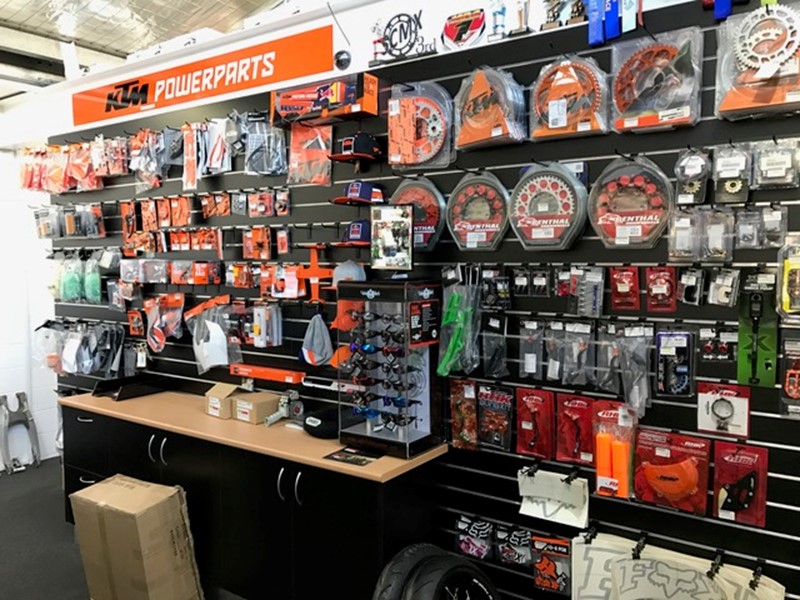Explore the most recent Motocross Gear NZ for each Level of Rider
Recognizing the Vital Parts of a Motorbike: A Comprehensive Guide for Fanatics
For motorcycle fanatics aiming to boost their riding experience and ensure their bikes run efficiently, recognizing the crucial components of a bike is critical. Each component, from the engine's intricate workings to the critical duty of the braking mechanisms, not just affects efficiency however additionally security and convenience. This guide will certainly go through the essential components that every rider must be acquainted with, allowing notified selections in both maintenance and potential upgrades. As we begin this expedition, one must ask: just how does each component interact to produce the seamless adventure every lover looks for?
Engine Parts

The camshaft plays a crucial role in controlling the timing of the engine's shutoffs, guaranteeing the exact opening and closing required for reliable fuel and air consumption, along with exhaust expulsion. This timing is important to keeping optimal engine efficiency and efficiency. In addition, the carburetor or fuel shot system, depending on the bike design, is liable for mixing air with fuel in the appropriate ratio for burning.
The cooling system, either air or liquid-based, works to maintain the engine's temperature within operational restrictions, avoiding overheating and making certain longevity - moto parts nz. Each component, meticulously made and integrated, adds to the seamless procedure of the engine, defining the bike's power result and general efficiency
Transmission System
Integral to the bike's functionality, the transmission system makes certain efficient power transfer from the engine to the wheels. This system makes up several vital parts, including the clutch, gearbox, and last drive, each playing a crucial function in converting the engine's power right into movement. The clutch, typically operated by a hand bar, serves to disengage the engine and engage from the transmission, allowing for smooth gear adjustments and controlled acceleration.
The transmission, typically described as the transmission proper, has a set of gears that cyclists can by hand move with to change the bike's rate and torque result. These gears are organized in a sequence that makes it possible for the bike to accelerate smoothly and preserve optimum engine performance across numerous rates. The majority of motorbikes use a sequential gearbox, needing the motorcyclist to change gears in a predetermined order.
Braking Systems
While comprehending the transmission system is essential to taking advantage of a motorbike's power, similarly important is the capability to control and quit that power successfully, which is where braking systems enter into play. Brakes are essential for safety and performance, providing the biker with the needed control to navigate numerous terrains and problems. Commonly, motorbikes feature 2 sorts of stopping systems: disc brakes and drum brakes.
Disc brakes are more widespread in contemporary motorbikes because of their superior performance. They include a brake disc, caliper, and pads. When turned on, the caliper presses the brake pads versus the rotating disc, transforming kinetic power into dirt bike parts near me warmth, thereby slowing the wheel. This system provides much better warmth dissipation, regular efficiency, and improved quiting power, particularly in damp conditions.
On the other hand, drum brakes, though less typical, are still found in some motorcycles. They function by pushing brake shoes versus the internal surface area of a drum affixed to the wheel. While normally much less effective in warm dissipation and quiting power, drum brakes are less complex and a lot more cost-effective.
Understanding these stopping systems' nuances enables cyclists to maintain their bikes properly and value the design that makes certain reliable and safe stopping.
Suspension and Steering
Suspension and guiding systems are crucial elements that substantially affect a motorcycle's handling and trip comfort. The shock absorber, containing forks at the front and shock absorbers at the rear, soaks up roadway irregularities, improving security and control. Front forks, normally telescopic or inverted, compress and rebound to minimize influences, while back shock absorbers maintain tire call with the roadway, critical for grip and safety and security.
Guiding, focused around the handlebars, links the rider to the motorcycle's directional control. The steering head bearings guarantee smooth operation, enabling precise ability to move. Correct placement and upkeep of these bearings are critical for foreseeable steering reaction and lowering rider exhaustion.
The suspension's adjustability is an additional important element; preload, damping, and rebound settings allow modification to fit various riding styles and conditions. This adaptability is important for optimizing performance, whether navigating city streets or tackling rugged trails. Innovations like electronic suspension systems supply real-time changes, boosting trip quality throughout diverse terrains.

Electric Systems
After making certain a smooth and controlled experience through effective suspension and steering systems, attention transforms to the electric systems, a pivotal facet of modern-day bikes. These systems play a vital role not only in beginning the engine however also in powering different parts that enhance the capability and safety of the motorbike.
At the heart of a motorcycle's electrical system is the battery, which stores electrical power necessary for starting the engine and powering supporting systems - motox parts nz. The generator or generator, paired with the rectifier-regulator, guarantees the battery stays billed while the motorbike is in procedure, transforming power into electric power and maintaining voltage levels
The ignition system, one more important component, is accountable for firing up the air-fuel mixture in the engine's cyndrical tubes. Modern motorcycles commonly make use of a digital ignition system, offering higher performance and integrity contrasted to conventional systems.
Lights systems, consisting of headlights, tail lights, and signs, are also vital, making sure presence and safety and security for the cyclist. Additional digital elements such as sensing units, control systems, and displays add to innovative attributes like gas shot monitoring, anti-lock braking systems (ABS), and electronic control panels, better enhancing the riding experience.
Final Thought
A thorough comprehension of a bike's essential parts, consisting of the engine, transmission system, braking systems, suspension, steering, and electric systems, is important for enthusiasts intending to maximize security, convenience, and performance. Proficiency of these components allows for educated decisions concerning maintenance and upgrades, ultimately improving the riding experience. By quad bike helmets incorporating this understanding, cyclists can guarantee winter motorcycle cover their motorcycles operate at peak efficiency and integrity, thereby maximizing both enjoyment and durability of their lorries.
For bike enthusiasts looking to boost their riding experience and ensure their bikes run smoothly, understanding the important elements of a bike is critical.Integral to the bike's performance, the transmission system makes sure reliable power transfer from the engine to the wheels.While understanding the transmission system is crucial to harnessing a motorcycle's power, similarly essential is the ability to control and quit that power effectively, which is where stopping systems come right into play. Usually, motorcycles feature 2 types of braking systems: disc brakes and drum brakes.
A thorough understanding of a motorcycle's essential elements, including the engine, transmission system, braking mechanisms, suspension, steering, and electrical systems, is important for lovers intending to maximize convenience, security, and performance.